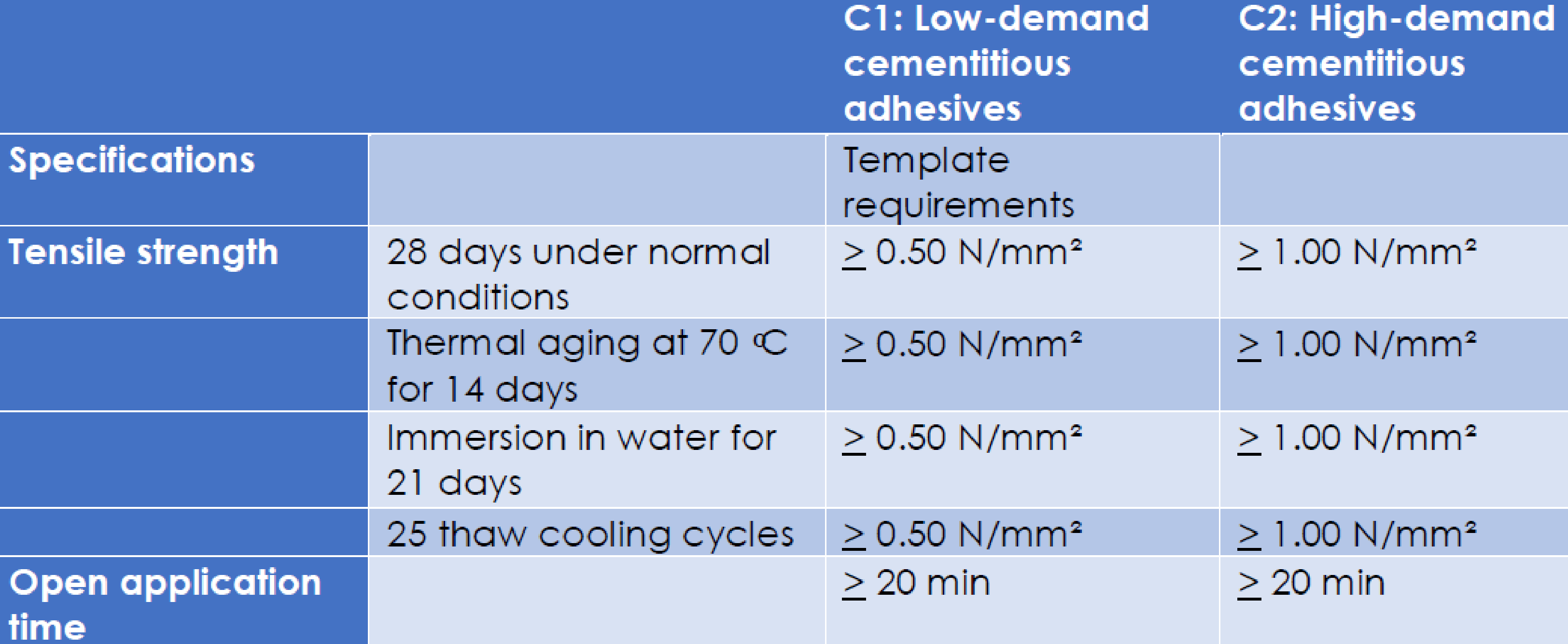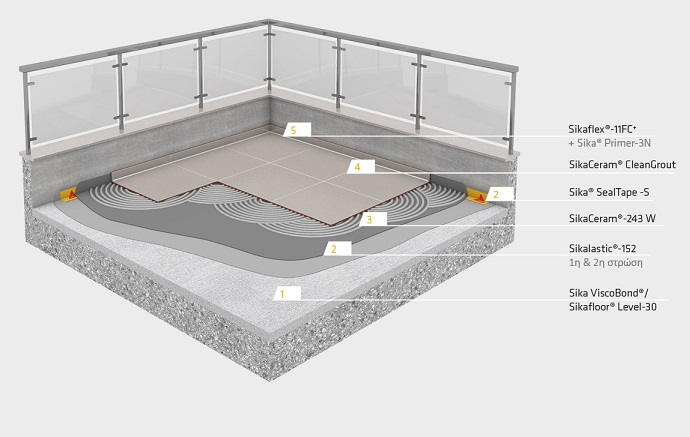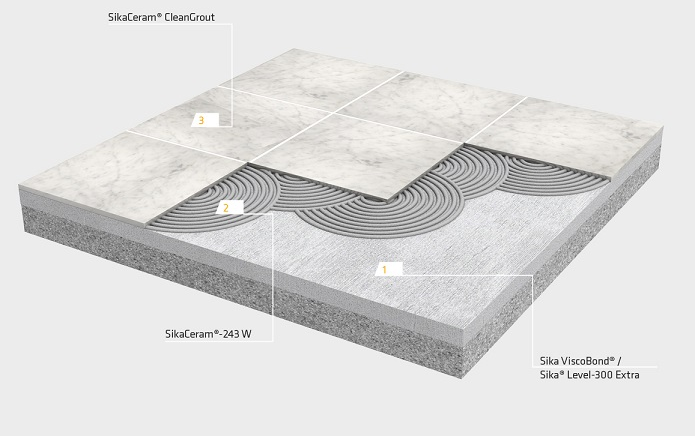Blog
CEMENT TILE ADHESIVES AND WHAT WE NEED TO KNOW
 In the market we can find a variety of options from cementitious adhesives and this may make it difficult to choose the right material in the various applications that we will encounter.
In the market we can find a variety of options from cementitious adhesives and this may make it difficult to choose the right material in the various applications that we will encounter.
If you notice on the backpacks of these materials, the category to which our mortar belongs is indicated.This marking is the Performance Declaration according to the European standards EN 12004 and EN 12002 where they define the technical characteristics of our material.
Standard EN 12004:
Defines the technical characteristics and methods of categorization of adhesives for coating ceramic tiles and other materials on floors and walls.


Standard EN 12002:
Defines two categories for cementitious adhesives based on the degree of transverse deformation (elasticity).
- S1: Deformable 2.5 mm ≤ S < 5 mm
- S2: Extremely deformable S ≥ 5 mm
How to Apply:
For the best application of the cementitious adhesives the substrate should be structurally stable, free of cement skin without residues and pollutants, oils, fats and loose or loose particles. The mortar is applied using a notched trowel. The amount of product should be sufficient to ensure full coverage of the back of the tile.The tiles should be laid on the surface of the fresh adhesive, applying sufficient pressure to ensure full contact of the adhesive with the tile and thus to ensure bonding. In case a surface film has formed on the surface of the adhesive, it is necessary to "comb" its surface again before applying the tiles. Avoid wetting the already applied layer of glue, as this will complicate the bonding process. Choose the right size of spatula that will give the right thickness to the back of the tile.
Consumption depends on the profile of the surface, the roughness of the substrate, as well as the size of the tiles and the method of gluing them, ie conventional gluing (application of glue on a single surface using a notched trowel) or the technique of applying glue to the back surface of the tile (cross layer in relation to that of the substrate).
Consumption table:

Suggested Solutions:
The system of laying tiles on new balconies and terraces requires careful planning and execution, in order to avoid common problems, such as uneven floors, improper drainage or incomplete waterproofing, improper configuration of details and perimeter of the space, etc.
The Sika system includes a sealing layer, which is formed using flexible, fiber reinforced, cementitious mortar, which is applied within just 24-48 hours from the formation of the substrate. Then the tiles are stick with cementitious tile adhesive, resistant to weathering and extreme weather conditions. The adhesive has high flexibility and high polymer content to be able to receive mobility due to temperature fluctuations. Cement-based grout is also highly flexible, low elasticity to minimize stress transmission to the substrate and at the same time has good mechanical strength and abrasion resistance. The system is completed with the use of high performance, rubber sealant for sealing and sealing of expansion and construction joints.
For indoor areas:
- C1T (Normal Tiles)
- C2TE (Large Tile Dimensions)
- C2TES1 (Above floors and wet areas such as bathrooms)
For outdoor areas:
- C2TE (Terraces with low strength requirements)
- C2TES1 (Terraces with high endurance requirements, swimming pools)
- C2TES2 (Swimming pools with higher endurance requirements, ships)
Our company has a wide range of cementitious adhesives and you can contact our Technical Department at 22 312710.


